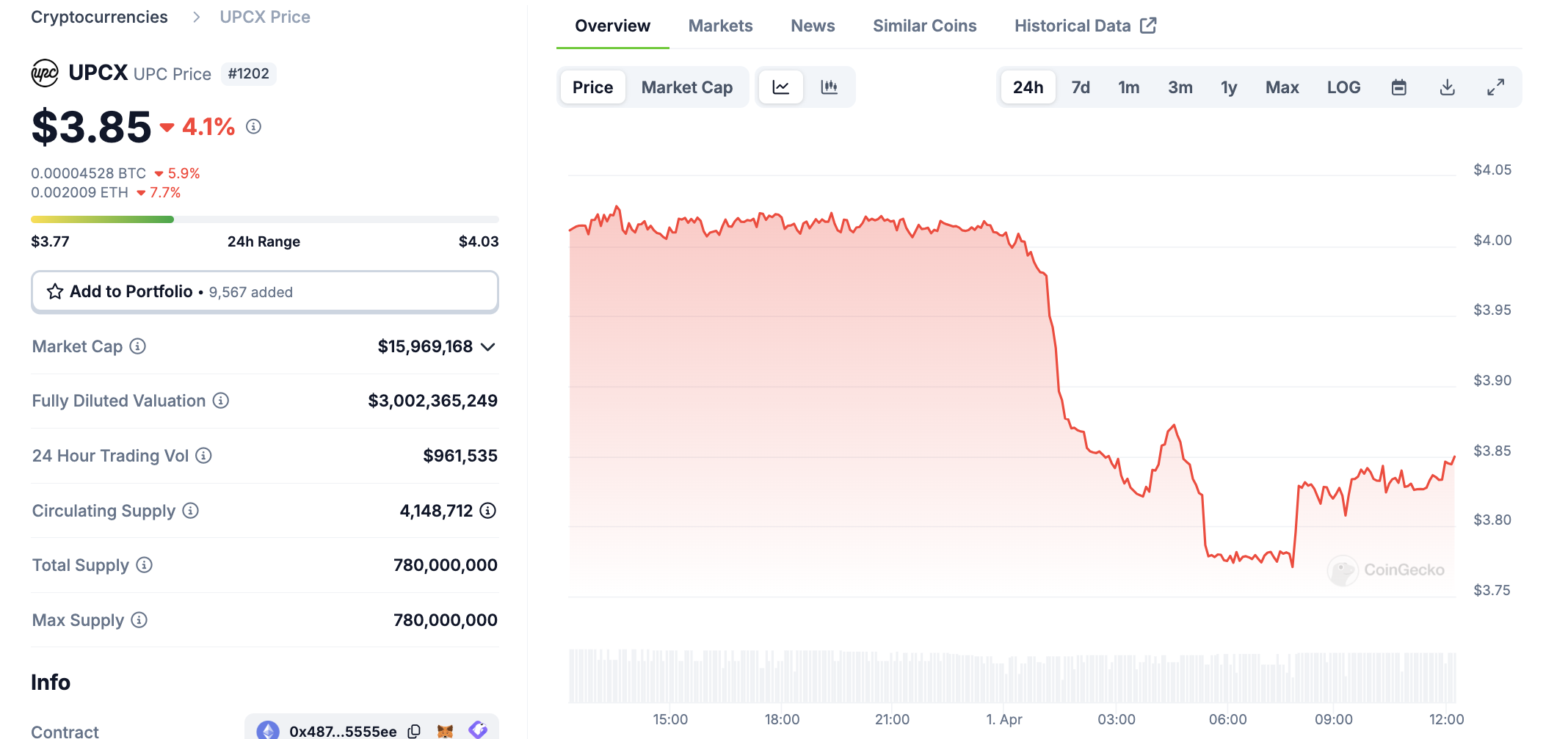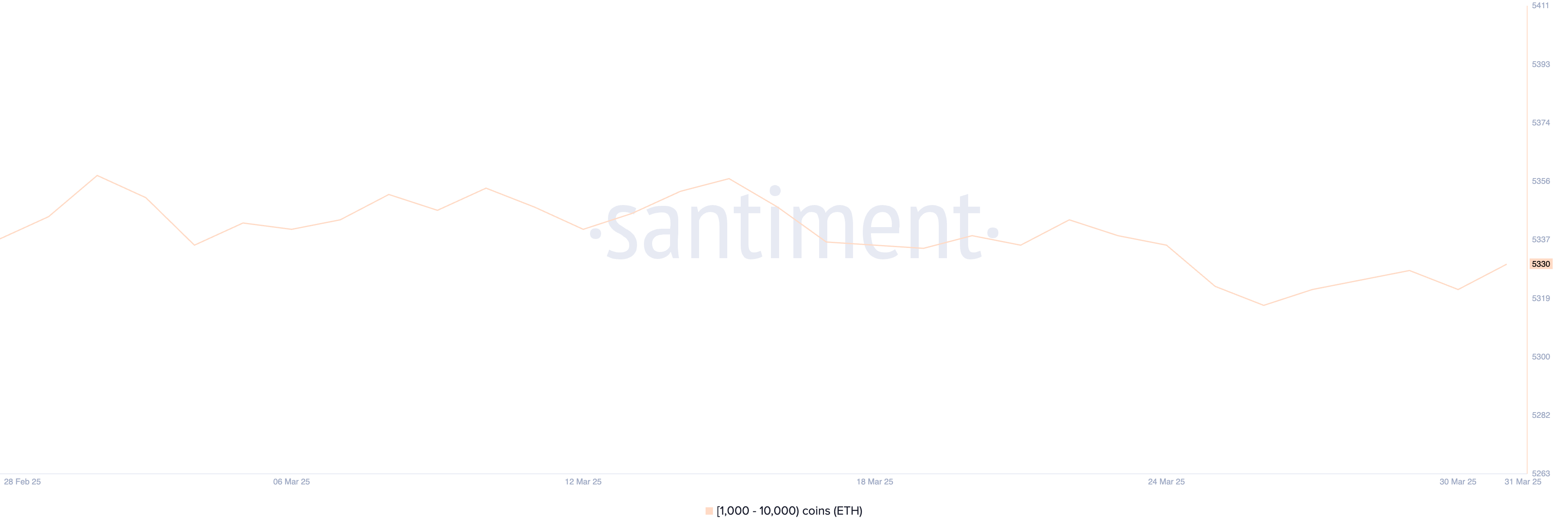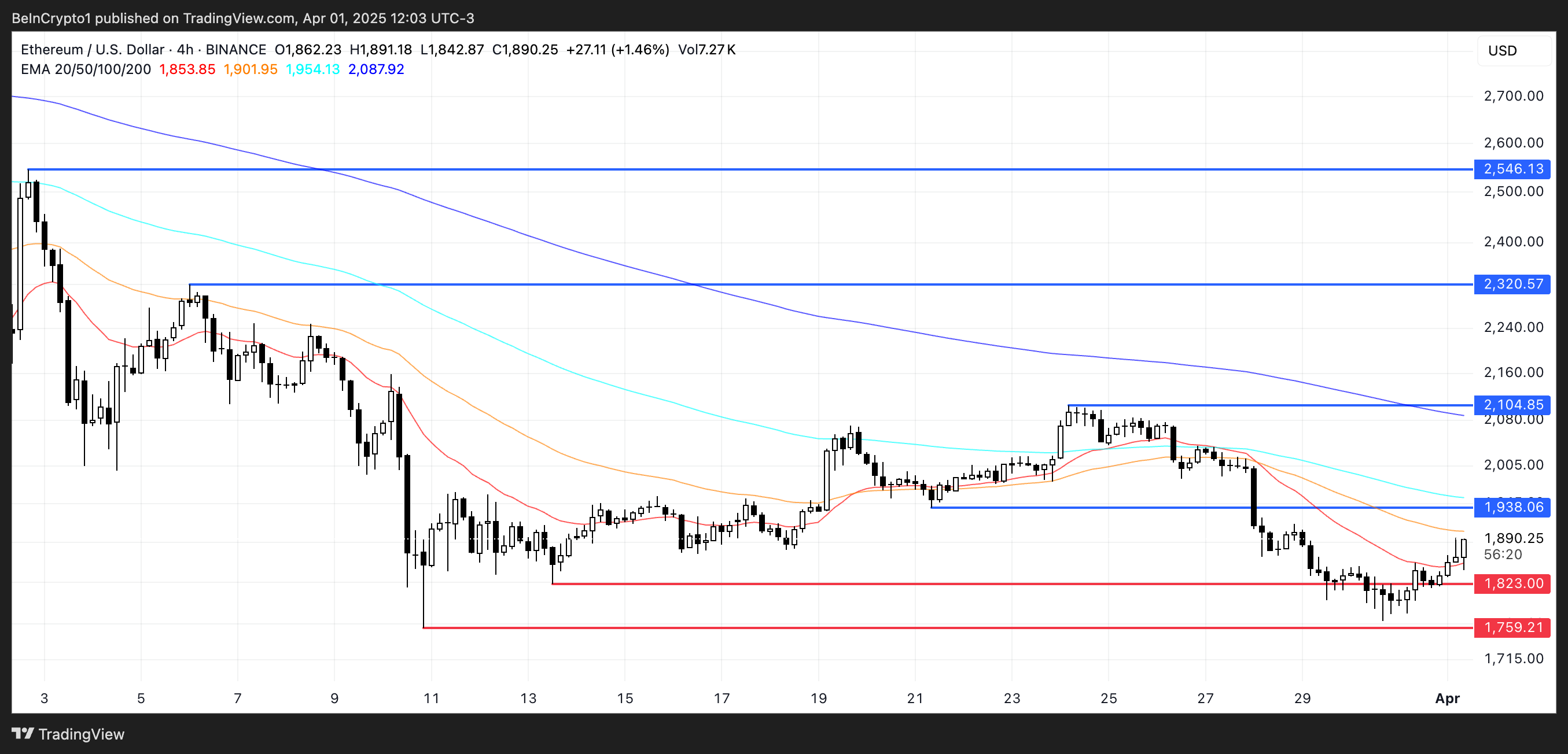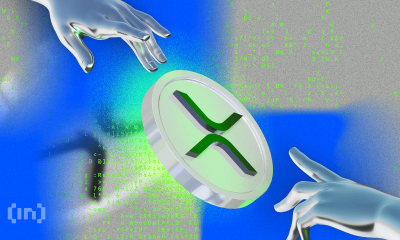Market
Argentina to Protect Scam Victims

BeInCrypto comprehensive Latam Crypto Roundup brings Latin America’s most important news and trends. With reporters in Brazil, Mexico, Argentina, and more, we cover the latest updates and insights from the region’s crypto scene.
This week’s roundup highlights Argentina’s efforts to protect cryptocurrency scam victims, Bancolombia’s integration of the Solana and Arbitrum networks, along with other key stories.
Bancolombia’s Wenia Expands with Solana and Arbitrum Integration
Bancolombia’s crypto platform, Wenia, has expanded its offerings by integrating the Solana and Arbitrum networks, allowing users to transfer Ethereum (ETH) via Arbitrum. This update aims to enhance user experience with lower transaction fees and faster processing times.
The inclusion of Solana and Arbitrum positions Wenia as a competitive force in the region, particularly with Arbitrum’s scalability advantages over Ethereum. Wenia noted that this move aligns the platform with a global trend favoring more efficient blockchain networks.
“We have an invitation you’re going to love! Arbitrum and Solana networks are now available on Wenia App, and our crypto specialist Rafael Santamaría will tell you everything in a takeover this Friday, September 13, on our Telegram channel. Don’t miss it!” the platform announced via its X account.
Read more: Crypto vs. Banking: Which Is a Smarter Choice?
Since its launch, Wenia has offered a variety of digital assets, including Bitcoin, Ethereum, USDC, MATIC, and the COPW stablecoin. The platform also allows users to view detailed reports on the reserves backing the COPW stablecoin through its Reserve Test feature.
Earlier this year, Wenia introduced Chainlink’s Proof-of-Reserve (PoR) services to enhance transparency in its holdings.
“On-chain Proof of Reserve data is a critical component for digital asset adoption and serves as a springboard toward increasing consumer confidence in the use of stablecoins and other tokenized assets. We chose Chainlink for its industry-leading platform,” said Pablo Arboleda, CEO of Wenia.
Enegix Global Taps Natural Gas for New Crypto Mining Data Center in Brazil
Enegix Global has announced plans to use isolated natural gas as the energy source for its upcoming cryptocurrency mining data center in Brazil. Set to launch this November, the facility will initially have a 25-megawatt (MW) capacity, with plans to expand to 80 MW.
The isolated natural gas, found in areas with limited infrastructure, offers a cleaner energy alternative for mining operations, particularly in regions rich in gas reserves. This move aligns with Brazil’s growing reputation for both cryptocurrency adoption and renewable energy innovation.
“In addition to being considered one of the largest cryptocurrency adoption markets in the world, Brazil has ideal conditions to attract the digital mining industry as well. With clean energy sources, such as isolated natural gas and hydroelectric power plants, the country favors the promotion of sustainability in the sector and at the same time presents favorable conditions for operating costs and electricity generation,” Enegix CEO Yerbolsyn Sarsenov stated.
Read more: Is Crypto Mining Profitable in 2024?
The project aims to support the mining of Bitcoin and altcoins while enhancing Enegix’s power management capabilities by over 30%.
Latam Countries Rank Among Top 20 With Highest Crypto Adoption
According to the latest report from blockchain analytics firm Chainalysis, Brazil, Venezuela, Mexico, and Argentina are among the top 20 countries globally with the highest cryptocurrency adoption rates. These Latin American nations join others like India, Nigeria, and the United States in leading the world in crypto usage and transfers.
Chainalysis’ global adoption index highlights the role of Bitcoin spot exchange-traded funds (ETFs) in driving BTC activity in North America and Western Europe. In contrast, stablecoins have had a more significant impact in regions such as Africa and Latin America.
“Between Q4 2023 and Q1 2024, the total value of global crypto activity increased substantially, reaching higher levels than 2021 during the cryptocurrency bull market. This year, cryptocurrency activity increased in countries at all income levels, with a pullback in high-income countries from early 2024,” the report noted.
Read more: Top 9 Crypto Friendly Countries For Digital Assets Investors

In Latin America, Brazil, Venezuela, Mexico, and Argentina are leading the charge. The report also notes a significant increase in global cryptocurrency activity between Q4 2023 and Q1 2024, surpassing the levels seen during the 2021 bull market. Cryptocurrency usage grew across all income levels, although high-income countries saw a slight decline in early 2024.
Fundación Blockchain Argentina to Offer Legal Support to Cryptocurrency Scam Victims
Fundación Blockchain Argentina has launched a new initiative aimed at protecting cryptocurrency users by offering free legal advice to victims of scams. Led by Dr. Sabrina Scavone, the program aims to provide guidance to individuals who have fallen prey to cryptocurrency-related fraud. As investments in digital assets, such as Bitcoin, continue to rise, so too have incidents of scams, creating concern within the crypto community.
The service focuses on offering specialized legal advice to those who have suffered financial losses from Ponzi schemes, fraudulent investments, or phishing attacks. The Foundation’s move follows a significant increase in such crimes, with reports indicating millions of dollars lost to hacks and scams. The service will provide victims with a thorough analysis of their legal options and clear steps for pursuing their cases.
Guido Zatloukal, president of Fundación Blockchain Argentina, highlighted that this initiative reflects the organization’s commitment to the safety and well-being of the country’s crypto community.
Read more: 15 Most Common Crypto Scams To Look Out For
Sabrina Scavone also stressed the importance of creating a more secure and transparent cryptocurrency ecosystem, noting that legal tools can be crucial for those affected by such crimes. With the rise of fraud, Fundación Blockchain Argentina strengthens its role in promoting blockchain education and development, now extending its efforts to include legal support.
Venezuelan Authorities Seize 35 Bitcoin Mining Machines Amid Regulatory Uncertainty
On September 6, 2024, Venezuelan authorities, led by the Bolivarian National Armed Forces (FANB) and the Public Prosecutor’s Office, seized 35 Bitcoin mining machines in the state of Guárico. The operation, sanctioned by the 3rd Control Court of San Juan de los Morros, also resulted in the confiscation of 30 extractors, several industrial fans, and two vehicles. The raid occurred due to the lack of necessary permits for operating the mining farm.
In Venezuela, cryptocurrency mining is heavily regulated, requiring authorization from the National Superintendence of Cryptoassets (Sunacrip). However, since Sunacrip was suspended in 2023 amid a corruption scandal involving state oil company PDVSA, the crypto industry has been left without a clear regulatory framework.
This regulatory void has created challenges for miners. Many argue that they lack the guidance to operate legally, resulting in interventions like the one in Guárico. High energy consumption from Bitcoin mining, particularly from ASIC machines, has been a key issue, exacerbating Venezuela’s ongoing energy crisis. Frequent blackouts have prompted the government to disconnect mining farms from the National Electric System (SEN), aiming to stabilize power for citizens.
Read more: Crypto Regulation: What Are the Benefits and Drawbacks?
President Nicolás Maduro recently stated that cryptocurrencies would become a priority on his political agenda, but details on restoring Sunacrip or clarifying regulations remain vague. Until then, the uncertainty surrounding Bitcoin mining in Venezuela continues, with miners left exposed to legal action and sanctions. Similar crackdowns have been reported in Paraguay, where protecting the electricity grid is also cited as the primary reason for such interventions.
As the Latam crypto scene grows, these stories highlight the region’s increasing influence in the global market. Stay tuned for more updates and insights in next week’s roundup.
Disclaimer
In adherence to the Trust Project guidelines, BeInCrypto is committed to unbiased, transparent reporting. This news article aims to provide accurate, timely information. However, readers are advised to verify facts independently and consult with a professional before making any decisions based on this content. Please note that our Terms and Conditions, Privacy Policy, and Disclaimers have been updated.
Market
Hill Rejects Interest-Bearing Stablecoins Despite Armstrong’s Wish


Representative French Hill, who Chairs the House Committee on Financial Services, rejected requests to approve interest-bearing stablecoins. Coinbase CEO Brian Armstrong made a public appeal in support of this yesterday.
Hill has been a vocal supporter of new stablecoin regulations, and the crypto industry counted his Committee appointment as a victory.
French Hill Rejects Interest-Bearing Stablecoins
If there’s one topic that’s a top priority for US crypto policy, it’d be stablecoin regulations. Significant momentum is building behind pro-industry regulations, and President Trump claimed that stablecoins will play a role in dollar dominance. However, Representative French Hill pushed back on one request, saying he opposes interest-bearing stablecoins:
“I hear the point of view, but I don’t think that there’s consensus among the parties or the Houses [of Congress] on having a dollar-backed payment stablecoin pay interest to the holder of that stablecoin,” Hill told reporters earlier today.
Although Hill portrayed this position on stablecoins as a common-sense viewpoint, it represents a limit to the crypto industry’s political influence. When Hill was chosen to head the House Committee on Financial Services, crypto took it as a big win. Further, he’s been a visible presence in the fight for stablecoin regulation. So, what’s the problem?
Essentially, Coinbase CEO Brian Armstrong made an appeal to Hill and other legislators regarding interest-bearing stablecoins. Just yesterday, Armstrong called this policy a “win-win” and a huge opportunity to help consumers and the economy.
“US stablecoin legislation should allow consumers to earn interest on stablecoins. The government shouldn’t put it’s thumb on the scale to benefit one industry over another. Banks and crypto companies alike should both be allowed to, and incentivized to, share interest with consumers. This is consistent with a free market approach,” Armstrong claimed.
Since Armstrong made this public appeal yesterday, it’s remarkable that Hill rejected his vision of stablecoins so quickly. Ostensibly, Armstrong’s political influence has been on the rise, as he played a prominent role in Trump’s Crypto Summit, and the SEC dropped its suit against Coinbase.
It’s an important fact for the US crypto industry to learn: no matter how quickly its influence is growing, it’s still very new to most people. Earlier this year, a string of state-level Bitcoin Reserve proposals failed in Republican-controlled states. President Trump may support crypto, but his supporters have limits.
Disclaimer
In adherence to the Trust Project guidelines, BeInCrypto is committed to unbiased, transparent reporting. This news article aims to provide accurate, timely information. However, readers are advised to verify facts independently and consult with a professional before making any decisions based on this content. Please note that our Terms and Conditions, Privacy Policy, and Disclaimers have been updated.
Market
How Did UPCX Lose $70 Million in a UPC Hack?

UPCX suffered a major hack today, with 18.4 million UPC tokens stolen from its management accounts. This amounts to about $70 million dollars, and the price of UPC fell drastically.
The hackers stole more UPC than is currently circulating in the markets and haven’t offloaded any assets yet. It is unclear who did this or how they will be able to secure their gains in other assets.
UPCX Suffers Major Hack
Cyvers, a crypto security firm that has tracked and uncovered several major crimes, identified a serious hack this morning. Multiple suspicious transactions took place involving UPCX’s management account, and the firm acknowledged suspicious activity. UPCX didn’t go into great detail, only describing a few security measures, but Cyvers showed the extent of the hack:
“It appears that someone gained access to the address 0x4C….3583E, upgraded the ‘ProxyAdmin’ contract, and executed the ‘withdrawByAdmin’ function, resulting in the transfer of 18.4 million UPC (approximately $70 million) from three different management accounts,” Cyvers claimed via social media.
UPCX is an open-source crypto payment system, and this hack may represent a serious blow to the company. According to CoinGecko data, the hackers stole significantly more UPC tokens than are currently available, which is around 4 million. Naturally, this caused the price to drop significantly, in an immediate drop of over 4%:

Although a $70 million hack will certainly damage UPCX individually, it’s unclear if it will actually impact the broader market much. The largest hack in crypto history took place a little over a month ago, and the community is still assessing the fallout. Meanwhile, UPCX is comparatively tiny; less than 10,000 X users viewed its post admitting to the security breach.
Since the UPCX hack took place, the recipient account hasn’t moved any of its UPC tokens. Indeed, it may be difficult for the perpetrator to convert these assets into usable fiat in the first place. If the hackers stole nearly 5x the amount of UPC tokens in circulation, any attempt to liquidate them will crash UPC’s token price even further.
Ultimately, the UPCX hack is strange for several reasons. Despite a large dollar amount, it hasn’t attracted a huge amount of buzz or impacted the market outside UPC. Hopefully, further analysis will identify the perpetrators, and possibly freeze the assets. Otherwise, the threat of a future sale could hamper UPC’s recover for the foreseeable future.
Disclaimer
In adherence to the Trust Project guidelines, BeInCrypto is committed to unbiased, transparent reporting. This news article aims to provide accurate, timely information. However, readers are advised to verify facts independently and consult with a professional before making any decisions based on this content. Please note that our Terms and Conditions, Privacy Policy, and Disclaimers have been updated.
Market
Ethereum Struggles to Break Out as Bear Trend Fades

Ethereum (ETH) enters the week with mixed signals as traders brace for tomorrow’s “Liberation Day” tariff announcement, a potential macro catalyst that could impact risk assets. While the BBTrend indicator remains deeply negative, it’s beginning to ease, hinting at a possible slowdown in bearish momentum.
On-chain data shows a slight uptick in whale accumulation, suggesting cautious optimism from large holders. Meanwhile, Ethereum’s EMA setup shows early signs of a trend reversal, but the price still needs to break key resistance levels to confirm a shift in direction.
ETH BBTrend Is Easing, But Still Very Negative
Ethereum’s BBTrend indicator is currently reading -11.66, slightly improved from -12.54 the day before, but still in negative territory for the second consecutive day.
The Bollinger Band Trend (BBTrend) measures the strength and direction of a trend based on how price interacts with the upper and lower Bollinger Bands.
A positive BBTrend suggests bullish momentum, with the price expanding toward the upper band, while a negative BBTrend indicates bearish momentum, with the price leaning toward the lower band. Typically, a value beyond 10 is considered a strong trend signal, making the current -11.66 reading a sign of continued downside pressure.

The persistent negative BBTrend suggests that Ethereum remains in a short-term bearish phase, with sellers still dominating the price action.
While yesterday’s slight uptick hints at a potential slowing of downward momentum, the indicator remains well below the neutral zone, meaning any reversal is still unconfirmed, despite Ethereum flipping Solana in DEX trading volume for the first time in 6 months.
Traders may interpret this as a warning to stay cautious, especially if ETH continues hugging the lower Bollinger Band. For now, price action remains fragile, and any bounce will need to be supported by a decisive shift in volume and sentiment to signal a meaningful reversal.
Ethereum Whales Are Accumulating Again
The number of Ethereum whales—wallets holding between 1,000 and 10,000 ETH—has ticked up slightly, rising from 5,322 to 5,330 in the past 24 hours.
While this is a modest increase, whale activity remains one of the most closely watched on-chain metrics, as these large holders often influence market direction. Whales’ accumulation can signal growing confidence in Ethereum’s medium—to long-term prospects, especially during periods of price uncertainty or consolidation.
Conversely, a decline in whale addresses typically suggests weakening conviction or profit-taking.

Although the recent uptick is a positive sign, it’s important to note that the current number of Ethereum whales is still below the levels observed in prior weeks.
This means that while some large holders may be re-entering the market, the broader whale cohort has yet to fully commit to an accumulation phase.
If the upward trend in whale numbers continues, it could support a bullish shift in sentiment and price. However, for now, the data points to cautious optimism rather than a decisive reversal.
Will Ethereum Break Above $2,100 Soon?
Ethereum’s EMA lines are showing early signs of a potential trend reversal, with price action attempting to break above key short-term averages.
If Ethereum price can push through the resistance at $1,938, it may signal the start of a broader recovery, potentially targeting the next resistance levels at $2,104, and if momentum builds—especially with supportive macro catalysts—increasing toward $2,320 and even $2,546.

On the flip side, if Ethereum fails to maintain its upward push and bearish momentum resumes, the focus will shift back to downside levels.
The first key support sits at $1,823; a break below that could expose Ethereum to further losses toward $1,759.
Disclaimer
In line with the Trust Project guidelines, this price analysis article is for informational purposes only and should not be considered financial or investment advice. BeInCrypto is committed to accurate, unbiased reporting, but market conditions are subject to change without notice. Always conduct your own research and consult with a professional before making any financial decisions. Please note that our Terms and Conditions, Privacy Policy, and Disclaimers have been updated.
-

 Market24 hours ago
Market24 hours agoBlackRock’s Larry Fink Thinks Crypto Could Harm The Dollar
-

 Market23 hours ago
Market23 hours agoCoinbase Tries to Resume Lawsuit Against the FDIC
-

 Altcoin23 hours ago
Altcoin23 hours agoCharles Hoskinson Reveals How Cardano Will Boost Bitcoin’s Adoption
-

 Market22 hours ago
Market22 hours agoHedera (HBAR) Bears Dominate, HBAR Eyes Key $0.15 Level
-

 Altcoin24 hours ago
Altcoin24 hours agoEthereum Bitcoin Ratio Drops to Record Low, What Next for ETH?
-

 Market21 hours ago
Market21 hours agoThis is Why PumpSwap Brings Pump.fun To the Next Level
-

 Market20 hours ago
Market20 hours agoCardano (ADA) Whales Hit 2-Year Low as Key Support Retested
-

 Market17 hours ago
Market17 hours agoEthereum Price Faces a Tough Test—Can It Clear the Hurdle?






















